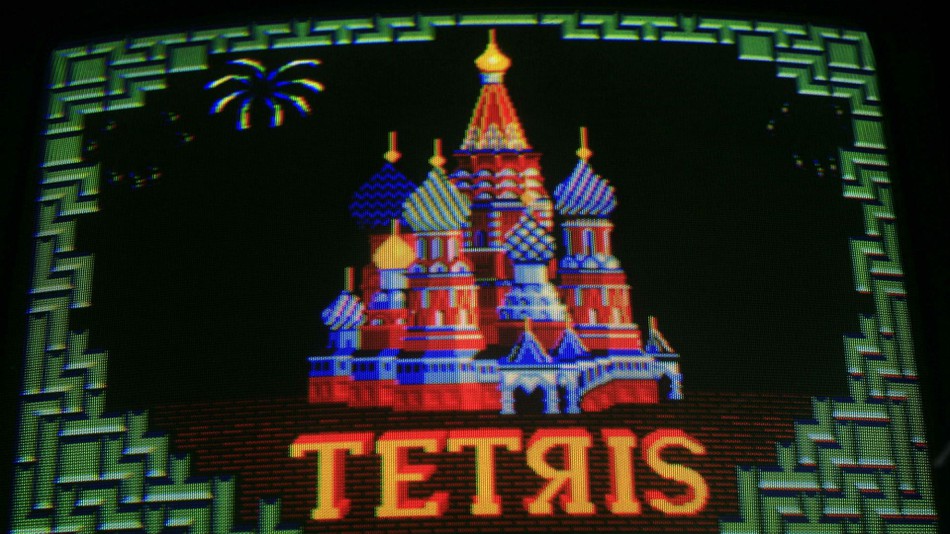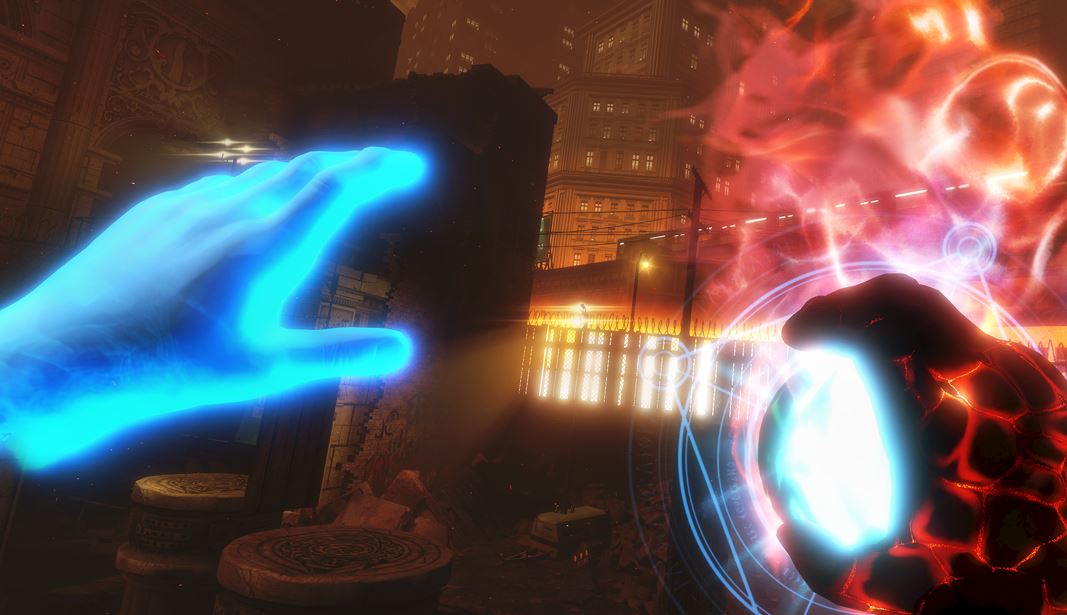Why Cutting-edge Tech Doesn’t Always Make for Immersive Games
When it comes to thoroughly immersive video games, motion control and VR are the future, right? Not necessarily...
You’re almost certainly familiar with Tetris, but it’s possible you haven’t heard of the Tetris Effect. Along with Tetris Syndrome, it’s a term used to describe the experiences felt by players who’ve spent an excessive amount of time slotting shapes together in Alexey Pajitnov’s classic puzzle game.
If you’ve played Tetris a lot yourself, you may recognize the symptoms: browsing the shelves in a supermarket, you may start thinking about ways of arranging cereal packets or tins of baked beans to create perfect, orderly rows, just like in Tetris. Others find themselves dreaming about slotting colored shapes together, or in their waking hours, see falling tetronimos floating around in their peripheral vision.
Despite its ominous-sounding name, the Tetris Effect isn’t necessarily a bad thing – it’s simply a temporary by-product of a game that appeals to our human need to sort things into neat, orderly piles. There’s even research to suggest that playing Tetris has a positive effect on the brain, from improving spatial awareness to processing traumatic events.
Part of the reason Tetris has all these effects on the human mind is because of its incredible simplicity. The controls amount to a few buttons; the rules of Tetris can be learned almost at a glance. Tetris is one of those games where, even on a device as basic as the original Nintendo Game Boy, it can make an hour fly by in what feels like minutes. You forget what your thumbs are doing and become thoroughly immersed in the task of moving blocks into a satisfying, tidy block.
Tetris is a worthwhile place to start when thinking about absorbing video games, precisely because it’s so simplistic. The word “immersive” has been bandied about in gaming circles for years, and the term tends to be attached to games that offer big, convincing worlds large enough to get lost in – sandbox games like Grand Theft Auto V, or RPGs like Fallout 4. Playing them, it’s easy to forget that we’re sitting in front of a computer, or slouching on a sofa, controller in hand.

These more recent games create a somewhat different kind of immersion than Tetris, admittedly: as absorbed as we become in moving blocks around, the latter didn’t transport us to another realm that felt real in the moment. All the same, the games provide the sense of losing track of time, of being lost in a pleasurable experience where the mechanics of the game – moving a thumbstick, pressing a button – are effectively invisible.
This latter point is worth bearing in mind when it comes to things like motion control and virtual reality. When the Nintendo Wii introduced the latter in the late 2000s, there was a scramble in the games industry to create a better, more sensitive rival to the Wii’s remote-and-nunchuck controller. The most prominent rival came from Microsoft, who spent extraordinary sums developing the Kinect – a motion-sensing device that allowed players to interact with their games without holding a controller of any kind.
On paper, it sounded like proper sci-fi, next-generation stuff. It was reportedly able to track even subtle body movements. Immersion-breaking things like buttons, controllers, and keyboards would no longer be required – at least in theory. In practice, the Kinect’s drawbacks were not dissimilar to the ones that came with the motion controllers on the Wii or the somewhat tacky-looking PlayStation Move.
The Kinect was perfect for party games or things like Dance Evolution, as well as titles like Tezuya Mizuguchi’s wonderful Child of Eden, a title pitched somewhere between a shooter and a psychedelic freak-out. It’s debatable, however, whether Kinect really added much to games with more detailed inputs like Forza, Splinter Cell: Blacklist, or Skyrim, the latter of which took advantage of the device’s voice commands. The subtle yet noticeable lag and occasional yet annoying misunderstood voice command did much to remind the player that they were still in their living room, shouting and flailing their arms about.

Again, this problem wasn’t relegated to the Kinect. In theory, the ability to swing the Wii remote to engage in sword fights in The Legend of Zelda: Skyward Sword sounded exciting, but in the real world, it proved imprecise and draining after long bouts of play. It’s telling, surely, that in an otherwise acclaimed, superbly-designed game, the motion controls were among the few issues consistently pointed out by critics.
It’s also questionable whether physically interacting with a game – whether it’s mimicking the actions of waving a sword or shouting at a dragon in Skyrim – creates a greater sense of immersion. Like watching a movie or even dreaming, true immersion in a game is close to an out-of-body experience: we forget the living room, the buttons, our arms and legs, and we lose ourselves in the moment. The miniscule movements of our fingers and thumbs are slight enough for us to ignore, like twitching in our sleep.
Last October, Microsoft discontinued production of the Kinect, effectively bringing its seven-year experiment in full-body motion control to an end. Nintendo still has motion control modes built into the Switch, but it’s one of several options to developers rather than the new console’s chief selling point. Meanwhile, there are a bunch of other devices competing for our money: a (relatively) new wave of virtual reality gizmos, which include the Oculus Rift, PlayStation VR, and the HTC Vive.

We’ve seen VR devices in the past, but the hope is that the technology has caught up with the concept: that interacting with a game through a headset and motion tracking will create an even greater sense of exploring a digital world. In his review of the Oculus Rift, however Eurogamer’s Richard Leadbetter neatly sums up a problem that 21st century tech has yet to solve at the time of writing. The VR port of horror adventure The Vanishing of Ethan Carter offers a breathtaking sense of realism that its conventional, flat edition simply cannot – but then the threat of nausea and headaches rears its ugly head.
Over on YouTube, gaming channel Metal Jesus made an intriguing video about VR and its potential drawbacks, where a chap named Dave Nunez, who has a PhD in Computer Science and Virtual Reality, explains in detail why VR can cause motion sickness. In essence, it’s all about the disconnect between what we see in a game and what our bodies experience – so in a game like Ethan Carter, we may be moving our heads around and looking at a realistic environment, but our bodies aren’t providing our brains with the same feedback as it would if we were exploring the real world. This mismatch can create nausea in some players after a while, and it can become particularly pronounced in games where you’re walking around and moving your head a great deal, like Ethan Carter or, say, a first-person shooter like Call of Duty.
In the short-term, problems like these – coupled with the current expense of high-end headsets – places VR beyond the reach of some. And even for those who do take the plunge, it’s a wonder whether wearing something relatively cumbersome on your head creates a more immersive experience than an expensive gaming setup, with a big screen, top-notch sound system, and your favorite controller.

None of this is to say that tech companies shouldn’t be trying to push the technical envelope when it comes to games, however. Motion controls and VR are fascinating concepts, and they’ll almost certainly be around for decades as they’re refined and pushed in new, as-yet untapped directions.
Let’s face it, the unstated aim has long been to create a gaming experience that’s more like The Matrix, eXistenZ, or Inception than Skyward Sword: a piece of tech that transports us entirely from our own body and into a non-existent realm – like a waking dream, where there are no controls, headaches, or nausea, just us and a digital world. The technology required to underpin it is surely decades away at least.
Until then, the current forms of immersion will have to suffice. And for this writer, the simplest forms of inputting commands are the best. Motion controls and VR helmets have their place, undoubtedly, but for true immersion, nothing can beat a well-made, addictive game and a few buttons. Just look at Tetris.